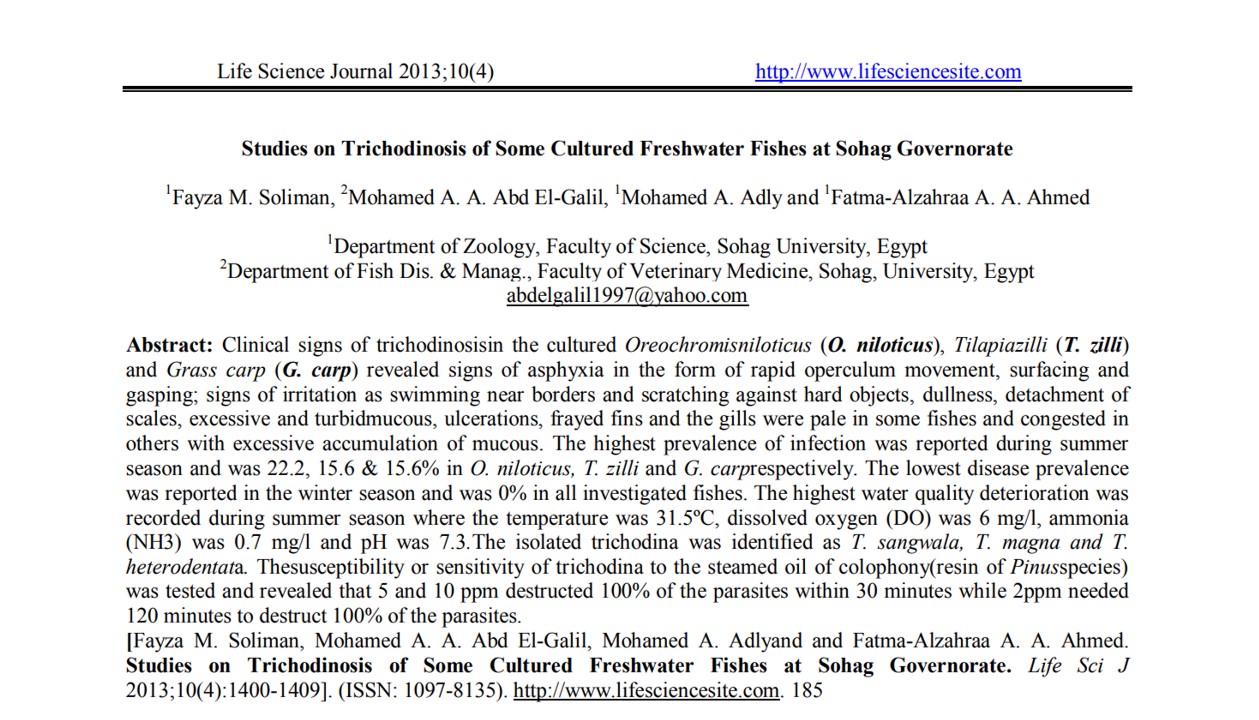Clinical signs of trichodinosisin the cultured Oreochromisniloticus (O. niloticus), Tilapiazilli (T. zilli) and Grass carp (G. carp) revealed signs of asphyxia in the form of rapid operculum movement, surfacing and gasping; signs of irritation as swimming near borders and scratching against hard objects, dullness, detachment of scales, excessive and turbidmucous, ulcerations, frayed fins and the gills were pale in some fishes and congested in others with excessive accumulation of mucous. The highest prevalence of infection was reported during summer season and was 22.2, 15.6 & 15.6% in O. niloticus, T. zilli and G. carprespectively. The lowest disease prevalence was reported in the winter season and was 0% in all investigated fishes. The highest water quality deterioration was recorded during summer season where the temperature was 31.5ºC, dissolved oxygen (DO) was 6 mg/l, ammonia (NH3) was 0.7 mg/l and pH was 7.3.The isolated trichodina was identified as T. sangwala, T. magna and T. heterodentata. Thesusceptibility or sensitivity of trichodina to the steamed oil of colophony (resin of Pinusspecies) was tested and revealed that 5 and 10 ppm destructed 100% of the parasites within 30 minutes while 2ppm needed 120 minutes to destruct 100% of the parasites.


